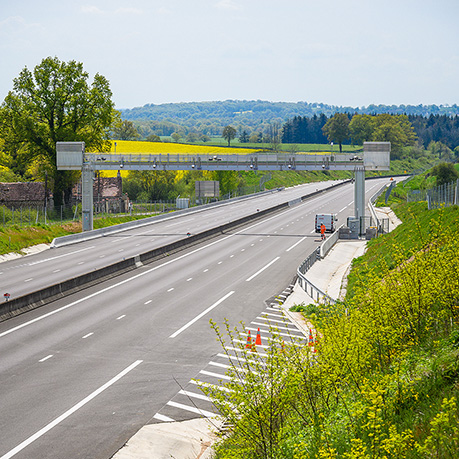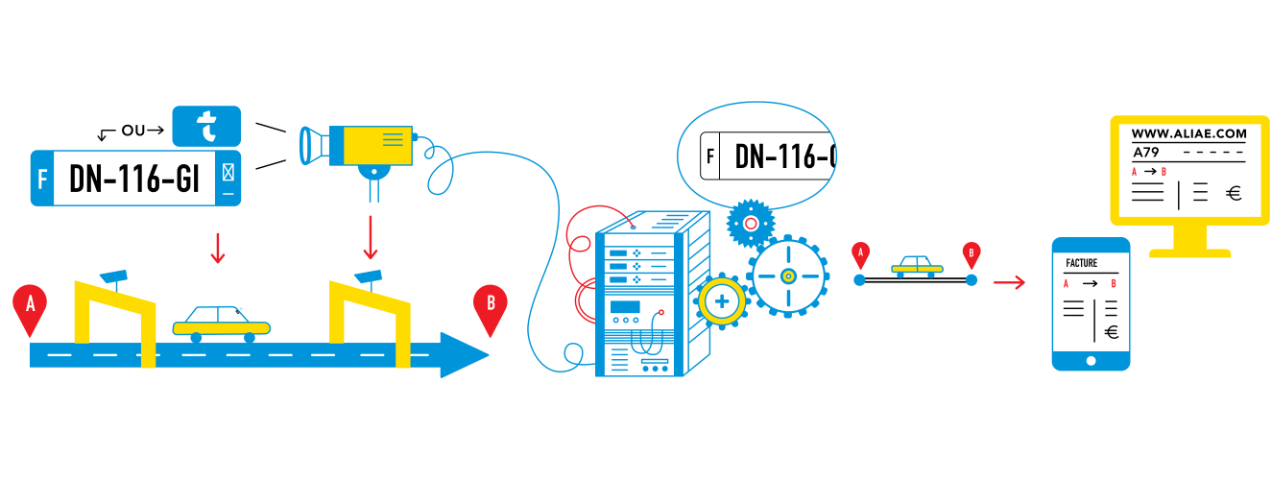Free-flow tolls
No more barriers, queues and slowdowns, free-flow tolls reinvent the motorway!
Gates equipped with infrared cameras and sensors identify vehicles by reading license plates or electronic toll badges.
L’ élément suivant est une vidéo What are free-flow tolls?
A first in France

The A79 will be the first French motorway to be put into service in free flow operation, with 88km and 6 gates.
The gates and the technology used were designed and supplied by one of the world leaders. They are already used in many countries: the United States, Spain, Austria, Brazil, Chile, Colombia, India.
The benefits of free flow
_page-0001.jpg)
No more stops and queues at the toll, the free-flow toll saves time and reduces the stress of driving through the barriers: find the right lane, find your means of payment, etc.
_page-0001.jpg)
The free flow reduces the risk of road accidents by avoiding slowdowns and restarts in a busy area.
_page-0001.jpg)
By eliminating the need to stop and restart vehicles at toll gates, free flow contributes to a significant reduction in CO2 emissions. For example, a heavy goods vehicle loaded at 40 tonnes consumes approximately two additional litres of fuel when passing through a toll gate. In addition, a free-flow gate requires less infrastructure than a conventional toll. It is therefore less soil artificialization and significantly reduces impact on the natural environment.
How do free-flow tolls work?
1/ The vehicle passes under a gate
The passage is accurately dated as the vehicle is identified using the electronic toll badge or the license plate.
2/ Readings analysis
The readings are automatically analysed and validated to determine the journey.
The device consists of a camera to which is added a layer of algorithmic intelligence that allows the system to communicate between facilities and with the back-office system.
3/ Payment
The journey is paid for automatically if you are equipped with an electronic toll badge or if you have subscribed to license plate registration.
Otherwise, you must pay for your trip within 72 hours after your journey on the A79, online or at a payment machine. In the event of late payment, a fixed compensation of €90 will be added to the toll fee.

Free-flow tolls and personal data protection
The free flow identification system is GDPR (personal data confidentiality) compliant and only reads license plates for toll and billing purposes.
Rights to access data and to revise is guaranteed to all customers.
The personal data protection control process is rigorous and ensured by a DPO (Data Protection Office) and a GDPR specialist at both Eiffage and APRR.
The software systems for payment on the website and at the ticket machines are developed in France and Eiffage is the publisher. Data is hosted in France.